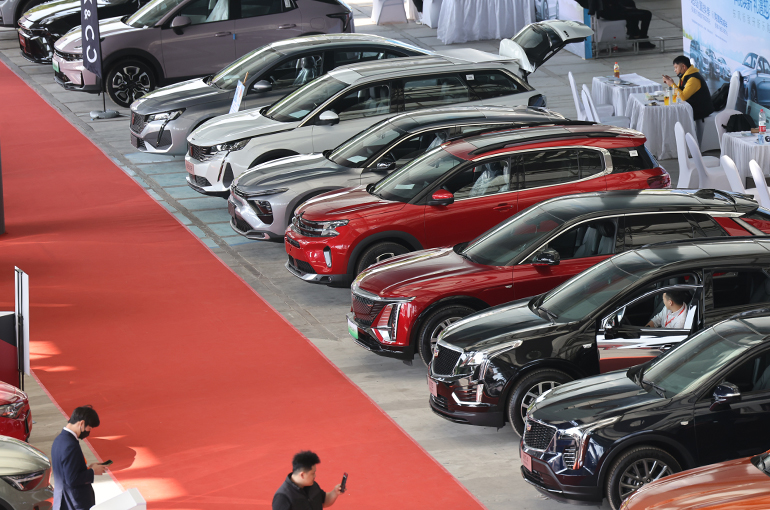 Global Car Industry Has Entered Moore’s Law Era, Insider Says
Global Car Industry Has Entered Moore’s Law Era, Insider Says(Yicai) Dec. 29 -- The worldwide auto industry has entered a development stage that adheres to Moore's Law, as the new product lifecycle is ever shortening while the competitive landscape is expected to undergo a profound shakeup, according to the vice chairman of third-party think tank China EV100.
In the age of fuel-powered vehicles, only one model entered the market every four years on average, while that time has shortened to 12 to 18 months now, said Zhang Yongwei, who is also the secretary general of China EV100.
This year alone, more than 1,000 new energy vehicle models hit the market, meaning that competition has become fiercer not only in terms of price, and carmakers have been introducing new innovative technologies more often, Zhang added.
Competition will intensify in the coming two years, pushing out weaker players, Zhang noted. Moreover, those years will also reveal whether joint ventures between Chinese and foreign carmakers can survive, he said. Some JVs are likely to catch up with the electrification and intelligentization trends, while others will not, he added.
Regarding the Chinese market, Zhang believes that it will become more diversified, and the production capacity will usher in a period of adjustment. The main focus of capacity transformation among traditional carmakers will be to electricity from fossil fuels, while electric vehicle makers, especially smaller ones, will become the main target of acquisitions and restructurings, Zhang noted.
He said it is impossible for the moment to determine how many will survive, but in two to three years a world-class Chinese automaker will emerge.
China’s NEV sector has been mired in a competitive price war this year that is to expected to continue next year, as tech giants such as Huawei Technologies, Baidu, and Xiaomi are also muscling into the market, Zhang said.
“With the return of battery prices to normal, the cost of a battery as a share of a vehicle’s total cost has fallen significantly,” Zhang pointed out. “But with more intelligent functions being added, the overall cost of making cars will increase.”
Still, the abundance of new models will deter carmakers from raising prices, he added.
About 9.5 million NEVs were sold in China and exported abroad this year, up about 37 percent on 2022, Zhang predicted. Next year’s figure could reach 13 million units, a 40 percent gain on 2023, with the NEV penetration rate exceeding 40 percent, he said, adding that the rate for electric passenger vehicles could even top 50 percent.
Sales of mainstream NEVs priced between CNY100,000 and CNY150,000 (USD14,100 and USD21,100) may achieve a breakthrough in the next two years, Zhang predicted.
In the first 11 months of the year, auto sales exceeded 26.9 million, up 11 percent from a year earlier, according to data from the China Association of Automobile Manufacturers. About 8.3 million were NEVs, a 37 percent gain, with a penetration rate of nearly 31 percent.
Founded in 2014, China EV100 is a nonprofit organization that aims to support the development of the EV industry by providing regulators with professional advice when drafting policies. Its staff are high-level government officials, scholars, and industry professionals, according to its website.
Editors: Tang Shihua, Futura Costaglione